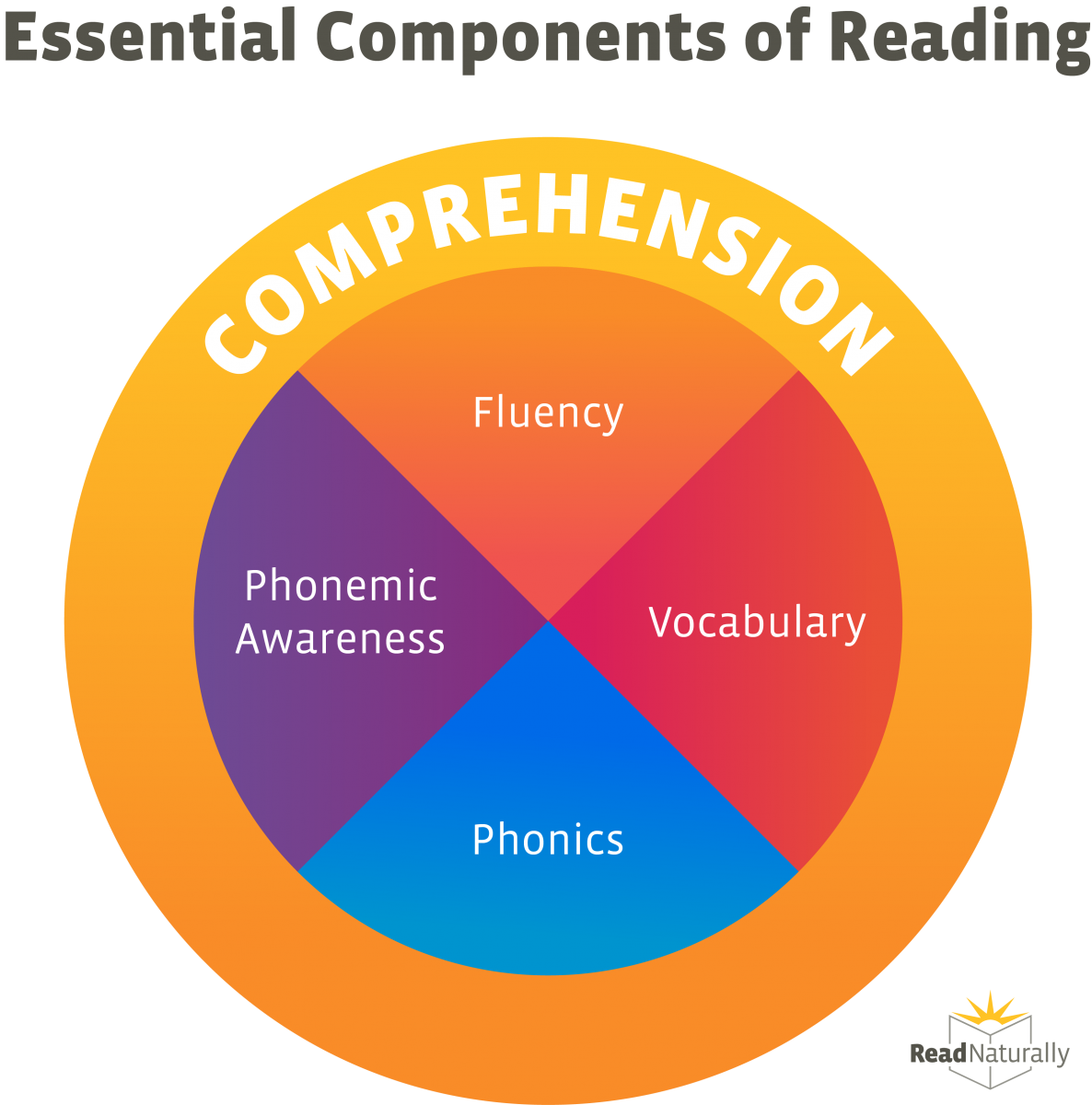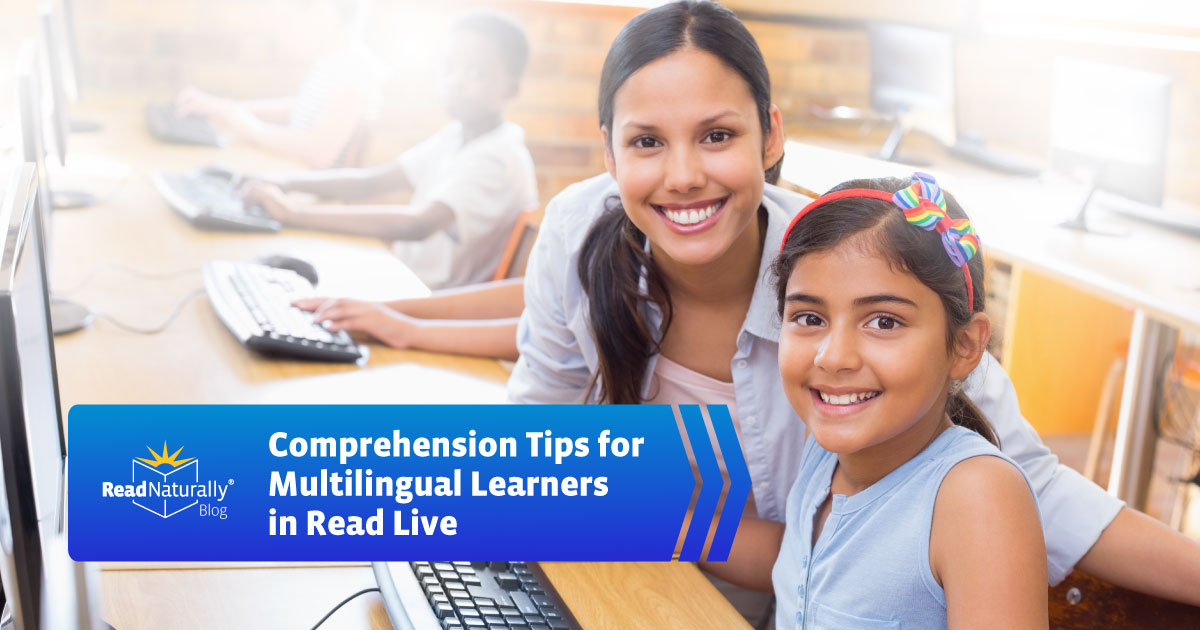 Comprehension gives the act of reading a purpose and opens the door to enjoyment of reading. Indeed, deriving meaning from text is why we bother reading at all! Comprehension can be a struggle for any student, but often it’s especially challenging for multilingual students. What can we do to set them up for success in Read Naturally Live, Read Naturally Live—Español, and beyond?
Comprehension gives the act of reading a purpose and opens the door to enjoyment of reading. Indeed, deriving meaning from text is why we bother reading at all! Comprehension can be a struggle for any student, but often it’s especially challenging for multilingual students. What can we do to set them up for success in Read Naturally Live, Read Naturally Live—Español, and beyond?
Turn on the supplemental read along.
Especially if a student is working in a program in a new language, turning on the supplemental read along in their primary language will help them build the context needed to understand the story.
Print the stories in the student’s primary language.
You can print stories from the Read Live homepage. The English versions of stories can be accessed under the Read Naturally Live tile, and the Spanish versions of stories can be accessed under the Read Naturally Live—Español tile. The versions are not always exact translations of each other but can still be useful to a multilingual student struggling with comprehension. This is a good option for students that have a difficult time reading the quiz questions in the new language.
Encourage students to click on all the vocabulary words (in blue) during the practice step.
The definitions and sample sentences that pop up when a student clicks on a vocabulary word do not include translations. However, the more words they click on and the more time they spend in the program, the more vocabulary they will develop. Clicking on vocabulary words is a great practice for all students. You can also have students record difficult vocabulary on our printable Difficult Word List.
Give students access to a Spanish/English dictionary.
Offering students a physical Spanish/English dictionary or teaching them to use an online resource such as spanishdict.com can be very beneficial. In this context, looking up vocabulary words isn’t cheating! Dictionaries can be great resources for multilingual students who are struggling with their vocabulary or overall comprehension.
Print out the Read Naturally Encore II glossaries or download them on your students’ devices.
Please note that the Encore II glossaries will not always be an exact match for the vocabulary in Read Live programs, but having the entire vocab list accessible could be helpful to some students.
Make adjustments for steps involving keyboarding (Prediction and Retell).
Both the Prediction and the Retell steps may be turned off if a student is really struggling to type or form their own sentences. If this is the case, it may be more valuable for the student to spend their time on the other steps. That said, if you have a low student-to-teacher ratio, you may have time to assist struggling students with keyboarding steps by either typing for them or simply talking them through the step.
Additionally, consider allowing the student to complete keyboarding steps in their primary language if it is too difficult for them to do so in the new language. Their response will still demonstrate comprehension (or lack thereof) of the text regardless of the language the student writes in. In this case, it is helpful to have a working understanding of the language the student writes in. Otherwise, you may need to keep a Spanish/English dictionary on hand for yourself.
Note that some short-answer questions cannot be turned off. If the student cannot answer these questions independently, you may instruct them to type something (e.g., the story title, their name, a question mark, etc.) into the text box so that they can move on to the next step. When you evaluate their quiz, you may take that opportunity to talk through the question with them to check for understanding.
Have students click on the words in the comprehension questions to hear them read aloud.
Some students who really struggle with fluency may not be able to read the questions at all, and therefore won’t be able to answer them correctly. If the student speaks the language fluently but does not yet read fluently, they can click on the words in the questions to hear them read aloud.
Consider comprehension scores when checking initial placement.
When a student is placed appropriately for rate (using the built-in placement test), but the average quiz score on the first three stories is below 60%, we recommend lowering to the nearest level and have the student complete three stories in the new level. If the student is still scoring below 60% average, lower the level again. Continue this process until the student is working in a level where the comprehension average for the first three stories is at or above 60%. That is the level where comprehension should begin to grow.
Check the student’s comprehension graph to see if there are patterns in the category of questions they struggle with.
Some students will consistently struggle with a specific type of comprehension question, such as the inferential or main idea question. If possible, find time to sit with students while they’re working on a question type they struggle with so that you can see where the trouble is and provide appropriate guidance.
Teach the free Comprehension Builder lessons in Read Live.
Read Live includes a downloadable Comprehension Builder packet with a set of lessons to use with students who struggle with comprehension. These lessons, which teach strategies to use before, during, and after reading, work well with native English speakers and multilingual learners alike.
Check out our new Comprehension Builder print product.
For students who need extra support, teachers have been loving our new Comprehension Builder print product. This full-color, spiral-bound lesson book includes 14 lessons, 55 activities, and hundreds of additional resources teachers can use to strengthen the comprehension skills of all students. It includes expanded versions of the before, during, and after-reading strategy lessons included in Read Live, a lesson on each of the question types featured in Read Live, and several additional lessons on key comprehension skills. The lessons can be taught sequentially, concurrently with Read Live, or a la carte as needed.

 Share your student’s success story—nominate him or her for our Star of the Month award. Win a Barnes & Noble gift card for the student and a Read Naturally gift certificate for your class!
Share your student’s success story—nominate him or her for our Star of the Month award. Win a Barnes & Noble gift card for the student and a Read Naturally gift certificate for your class!
Post a New Comment